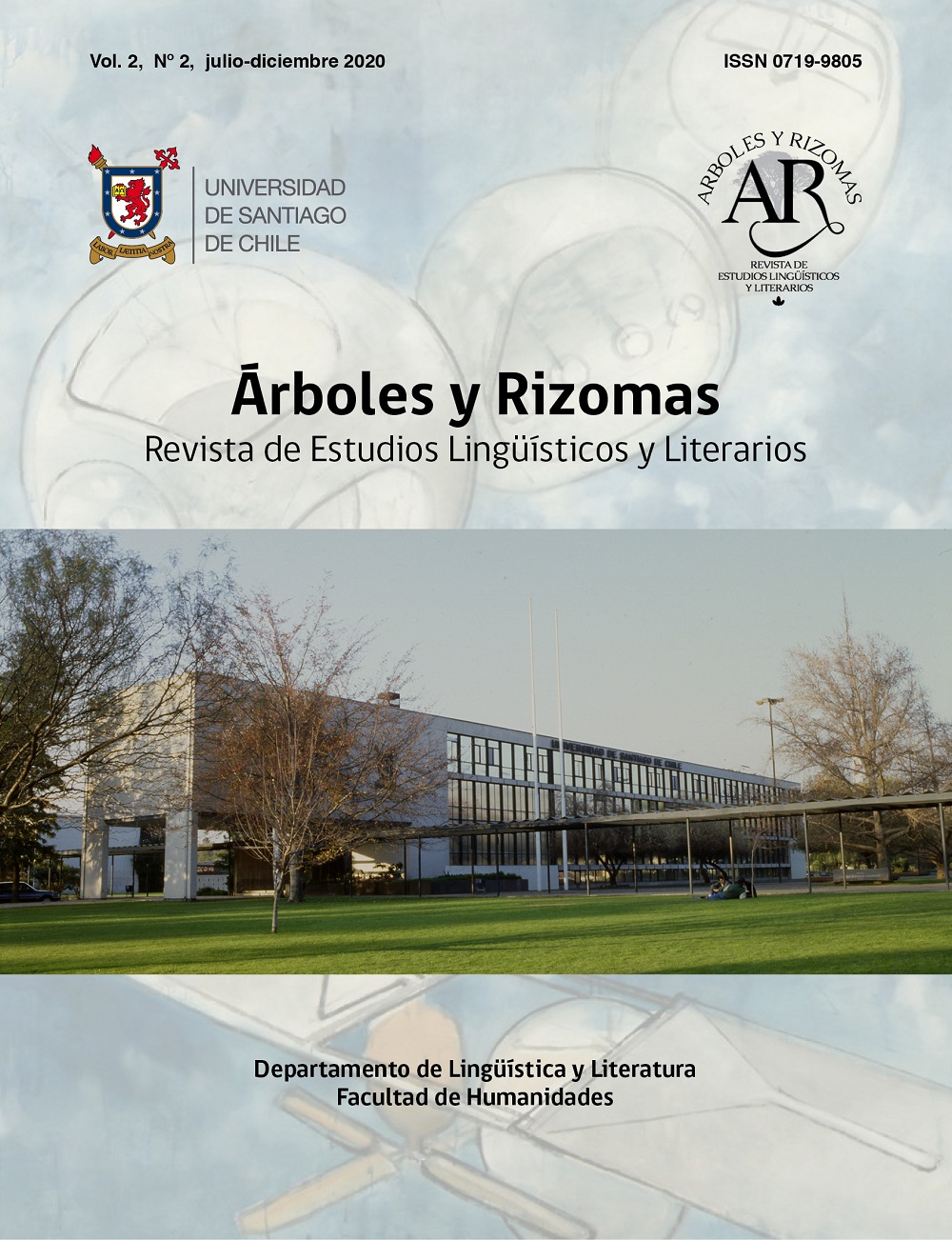Approaching grammatical free indirect style based on the CEILE corpus
DOI:
https://doi.org/10.35588/ayr.v2i2.4590Keywords:
syntax, free indirect style, atypical direct style, Corpus Linguistics, CEILEAbstract
The indirect free style, as discourse reproduction procedure, has been studied from different disciplines From a grammatical point of view there is no consensus among authors when it comes to categorizing it. Based on a critical analysis of the state of the art, the main theories about the syntax of the indirect free style in Spanish will be highlighted and a new avenue to explore suggested. This contribution approaches the problem from using corpus linguistics, by creating a specific corpus of free indirect style. For this purpose, the Corpus de Estilo Indirecto Libre en Español (CEILE) is presented to facilitate the work of compiling and classifying texts for subsequent analysis that may be useful to delve into the object of study from a greater number and variety of texts. In addition, a different approach is proposed when contrasting the free indirect style with other forms of discourse reproduction that goes beyond the prototypical ones and attends to the so-called atypical direct style, whose preliminary analysis points to a grammatical and discursive configuration that brings them close together. Without totally resolving the existing controversy, the present work only seeks to channel a possible line of research that could shed light on the problem of the indirect free style in Spanish grammar.
Downloads
References
Abril, G. (1997). Teoría general de la información. Madrid: Cátedra.
Bakhtín, M. (1975). The Dialogic Imagination. Traducción de C. Emerson y M. Holquist Austin: University of Texas Press.
Dolezel, L. (1973). Narrative Modes in Czech Literature. Toronto: University of Toronto Press.
https://doi.org/10.3138/9781442653849
Domínguez, P. (1975). El discurso indirecto libre en la novela argentina. Porto Alegre: Pontificia Universidade Católica do Río Grande do Sul.
Estévez-Rionegro, N. (2020a). Corpus de Estilo Directo Atípico en Español (CEDAE). Linred: Lingüística en la red, 17, pp. 1-18. https://doi.org/10.37536/LINRED.2020.XVII.10
Estévez-Rionegro, N. (2020b). Corpus de Estilo Indirecto Libre en Español (CEILE) Linred: Lingüística en la red, 17, pp. 141.
Estévez-Rionegro, N. (2017). Las construcciones de estilo directo en español. Estudio de corpus (tesis doctoral). Universidad de Santiago de Compostela, Santiago de Compostela.
Estévez-Rionegro, N. (2016). Corpus Informatizado de Estilo Indirecto Libre en Español. Número de asiento registral registral 03/2017/1093 del Registro de la Propiedad Intelectual.
Fillmore, C.J. (1981). Pragmatics and the Description of discourse. En P. Cole (Ed.), Radical Pragmatics (pp. 143-166). Nueva York: Academic Press.
Girón, J. L. (1989). Las formas del discurso referido en el “Cantar de Mio Cid”. Boletín de la Real Academia Española, anejo XLIV.
Girón, J. L. (2002). Discurso indirecto libre y autobiografía en la Vida del capitán Contreras. En C. Saralegi y M. Casado (Eds.), Pulchre, bene, recte. Estudios en homenaje al Prof. Fernando González Ollé (pp. 625-638). Barañáin: EUNSA Ediciones Universidad de Navarra.
Girón, J. L. (2004). Gramaticalización y estado latente. Dicenda. Cuadernos de Filología Hispánica, 22, pp. 71-88.
Hernadi, P. (1972). Beyond Genre. New directions in Literary Classification. Londres: Cornell University Press.
Herczeg, G. (1963). Lo stile indirectto libero in italiano. Florencia: G. C. Sansoni.
Hickman, M. (1993). The boundaries of reported speech in narrative discourse: some develomental aspects. En J.A. Lucy (Ed.), Reflexive language. Reported speech and metapragmatics (pp. 63-90). Cambridge: Cambridge University Press. https://doi.org/10.1017/CBO9780511621031.006
Lozano, J., Peña-Martín, C. y Abril, G. (1989). Análisis del discurso. Hacia una semiótica de la interacción textual. Madrid: Cátedra.
López-Blanquet, M. (1968). El estilo indirecto libre en español. Montevideo: Don Bosco.
Martínez-Bonati, F. (1980-81). El sistema del discurso y la evolución de las formas narrativas. Dispositio, 5-6 (15-16), pp. 1-18.
Morata Garavelli, B. (1985). La parola d’altri. Propettive di analisi del discorso. Palermo: Sellerio.
Reyes, G. (1984). Polifonía textual. La citación en el relato literario. Madrid: Gredos.
Rivarola, J. L. y Reisz, S. (1984). Semiótica del discurso referido. En L. Schwartz e I. Lerner (Ed.) Homenaje a Ana María Barrenechea (pp. 151-174). Madrid: Castalia.
Rojas, M. (1980-81). Tipología del discurso del personaje en el texto narrativo. Dispositio, 5-6 (15-16), pp. 19-55.
Spitzer, L. (1946). Sur le discours direct lié (DDL). Bulletin Linguistique, 14, pp. 17-45.
Verdín, G. (1970). Introducción al estudio indirecto libre en español. Revista de Filología Española, anejo CXV.






